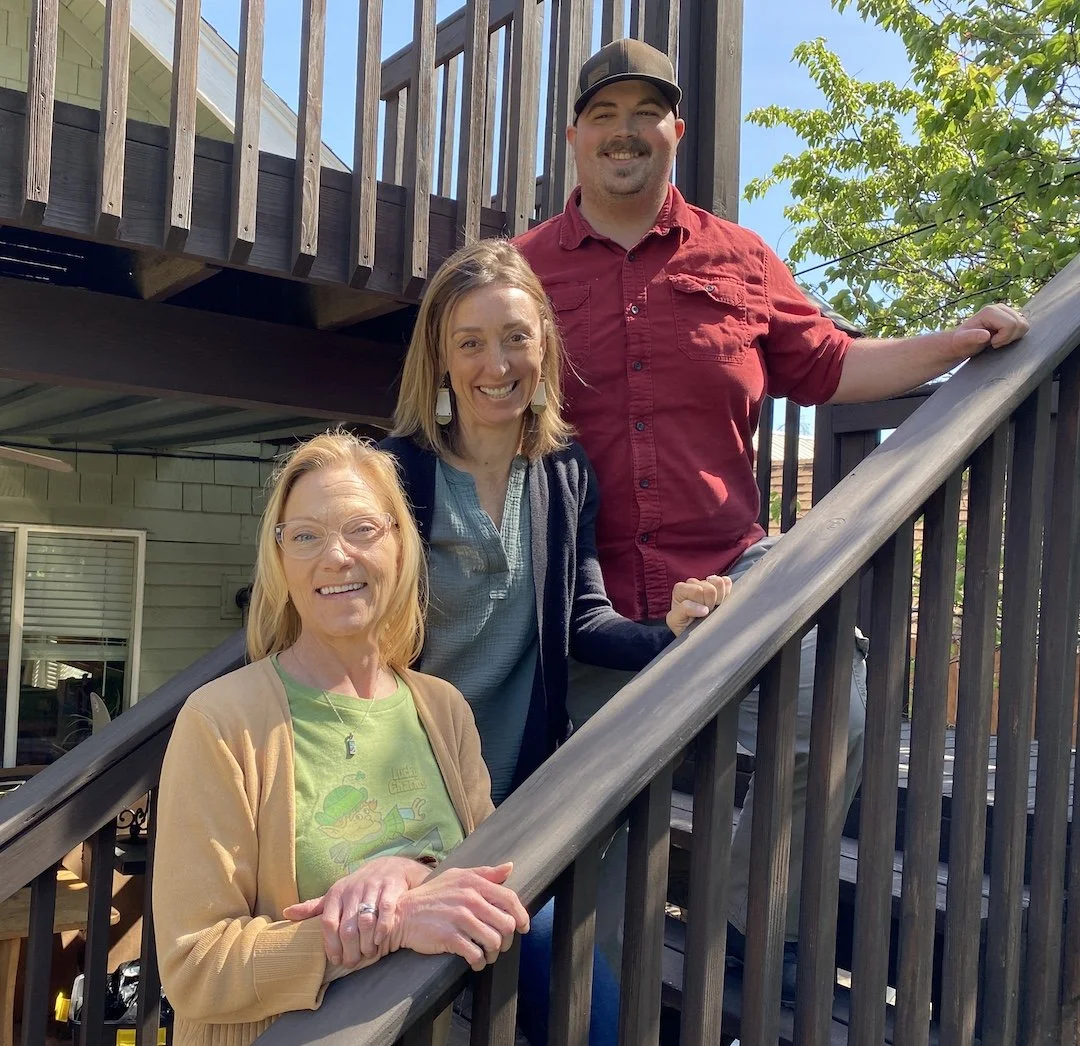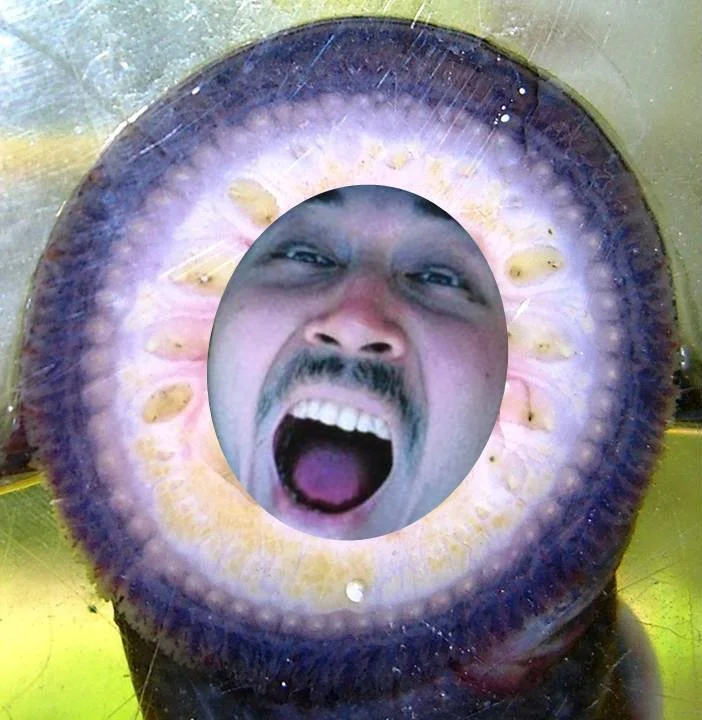Yakama Nation and Glenwood School Release Adult Pacific Lamprey Into the White Salmon for the First Time Ever
Yakama Nation Fisheries supporting students in getting hands-on biology experience. Photo Credit: Pacific Lamprey Project
by Cole Goodwin
On Monday May, 9th, Yakama Nation Fisheries (YNF) and Glenwood High School’s Zoology class released twenty tagged adult Pacific lamprey into the White Salmon River at the BZ Corner launch site for the first time ever. The tags will enable biologists to track the fish's movements up and down stream.
Davey Lumley, a Lamprey Biologist who has been with the Pacific Lamprey Project since 2011 said that the event was a fun educational experience for Glenwood students as well as a symbol of hope for lamprey recovery.
“I really enjoy working with the kids because they are so open to new ideas,” said Lumely. “We do a lot of educational outreach. We’re stationed in Toppenish, and we try to involve as many students from the surrounding areas as we can because we want to get the younger generation interested in science and fish recovery.”
Students got a hands-on biology experience, learned about the lamprey’s life cycle, historical, scientific and cultural significance. Some students and passersby even received lamprey ‘kisses’ from the fish.
A white water rafter gets a ‘kiss’ on the forehead from a lamprey while students look on. Photo Credit: Yakama Nation Fisheries
“They are a very unique fish with a fascinating history,” said Lumely.
Lampreys are nocturnal, meaning they are mostly active at night.
They came into being nearly 450 million years ago, long before sturgeon, dinosaurs, or humans ever existed. The lamprey species has proven itself to be very durable, having survived global mass extinction events including ice ages, shifts of the continental plates, floods, and global warming.
An adult Pacific lamprey. Photo Credit: Yakama Nation Fisheries
Unlike a typical fish, lampreys have no bones, no scales, and no gills. They have gill holes instead. And they are probably best known for their strong suction-cup like mouth lined with upper and lower teeth with lateral teeth on the sides. They use their mouth to suction themselves to hard surfaces and ingest their food while in the ocean.
Juvenile Pacific lamprey using their mouths to adhere to a glass surface. Photo Credit: Yakama Nation Fisheries
Much like the salmon, the Pacific lamprey is a migratory fish that spends the first 3-9 years of its life in freshwater as a larva. During this time they are blind filter feeders that burrow into the river bottom and help turn and aerate the sediment, and break down organic matter to keep freshwater systems healthy. Once they’ve grown, the lamprey take to the salty seas, where they will parasitically feed on fishes and whales for 2-7 years. And like salmon, they then stop eating and return to freshwater systems to spawn and die. However unlike salmon, Pacific lamprey do not necessarily return to the tributaries in which they were born, instead they follow the scent of other lamprey pheromones (bile acids that primarily originate from their larval stage) to where they know there is a conducive habitat to support spawning and early live stages for lamprey.
Lamprey are an important and traditional nutrient dense food source for salmon, wildlife and people’s all over the world.
Lamprey are considered one of the Yakama Nations sacred ‘first foods.’ First foods are of important cultural significance and are served first during ceremonies.
“For over 10,000 years, we have depended on lamprey for food and medicine. We harvested lamprey in a sustainable manner, taking only what our families needed for subsistence. During this time, lamprey were plentiful. Due to various factors, this is no longer the case,” according to the YNF Pacific Lamprey Project in their 2021 Status and Trends Annual Report.
As seen above, lamprey are a very healthful food and are high in vitamins, minerals, and fatty acids. More Lamprey nutrition facts are available at CalorieSlism. Photo Credit: Yakama Fisheries
A chart comparing lamprey and salmon nutritional values. Photo Credit: Yakama Fisheries
“Our goal is to restore natural production of lamprey to a level that will provide robust species abundance, significant ecological contributions, and meaningful harvest,” said YNF. “To increase the number of lamprey returning to the Yakima Nation ceded lands, we annually collect adults at Bonneville, The Dalles, and John Day dams for the purpose of translocating the fish to various locations in the Columbia Basin. We are also developing hatchery techniques to reintroduce larvae and juveniles, are rescuing stranded fish, and installing lamprey ladders.”
Lamprey are not good swimmers.
Instead of swimming continuously as a salmon does in fast currents, Pacific lamprey swims in short bursts and then adheres to surfaces with its sucker before resting and moving forward once more. This style of swimming makes the ninety degree turns in standard fish ladders very difficult to navigate.
“We estimate that we lose about fifty percent of the lamprey population at every dam that doesn’t have lamprey ladders,” said Lumley. “But thanks to lamprey recovery efforts and lamprey ladder installations our local populations are growing.”
Note: Starting in 2018, return estimates are based on PIT tag studies rather than window counts. Photo Credit: Yakama Nation Fisheries
“The Klickitat river has a very healthy population,” said Lumely.
“We’d hoped to find more lamprey in the White Salmon river following the removal of the Condit Dam in 2011, but because the lamprey has such a long life cycle, it might take us a few years to find them and to see an increase in numbers. The White Salmon also has a lot more physical barriers for the lamprey than the Klickitat, which is why we just released adults into the upper portion of the river, so that they can get a little bit of a jumpstart to offset the lack of pheromones which they see as an attractant.”
“Over at the Prosser Dam on the Yakima River, we’ve seen an increase from 0-87 fish to 1,500 in five years,” said Lumely. “So we’re seeing results.”
Note: Starting in 2018, return estimates are based on PIT tag studies rather than window counts. Photo Credit: Pacific Lamprey Project
Get Involved: World Fish Migration Day Adult Lamprey Release
When: May 21st 2022, from 10:00 a.m. to 12:00 p.m.
Where: 1081 W Umptanum Rd, Ellensburg, WA 98926-8960
For the 2022 World Fish Migration Day, the YNF Pacific Lamprey Project and partners (U.S. Fish and Wildlife, Benton Conservation District, Columbia River Inter-Tribal Fish Comission, Kittias Environmental Education Network, and more) will be hosting an educational outreach event featuring stations about Pacific lamprey biology, culture, and restoration as well as information on environmental DNA, fish prints, and more.
Everyone attending will get a free raffle entry to win some lamprey swag, such as stickers, keychains, and coasters made with epoxy resin and lamprey teeth.
Adult Pacific Lamprey will be released after the raffle, and the crowd can participate and release their own lamprey.
For more information on how your school or organization can get involved in the Pacific Lamprey Project email: lumd@yakamafish-nsn.gov.
About Yakama Nation Fisheries
Yakama Nation Fisheries protects and restores the Columbia River and the fish that it supports. Through more than 100 current projects, it restores habitat, ensures harvest, and supplements stocks with refined hatchery practices and by mitigating the effects of hydropower. Everyday, they work to honor, protect and restore the Columbia River for the good of the Yakama people and everyone in our region. To learn more visit Yakamafish-nsn.gov.
A map showing the locations of Pacific Lamprey Projects, and lamprey recovery efforts.








